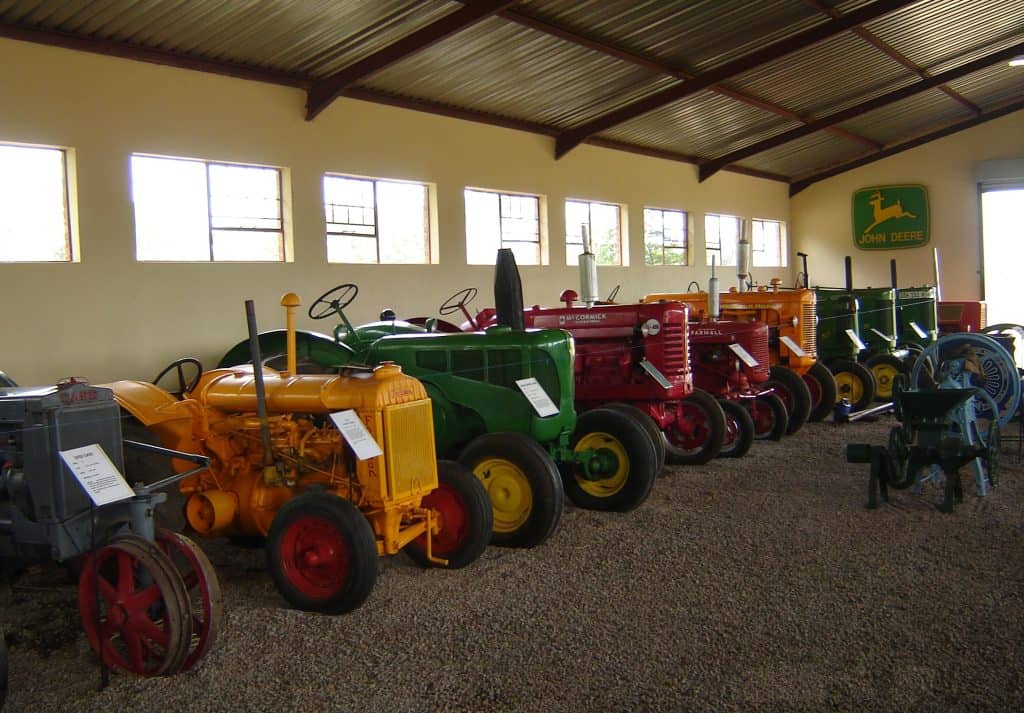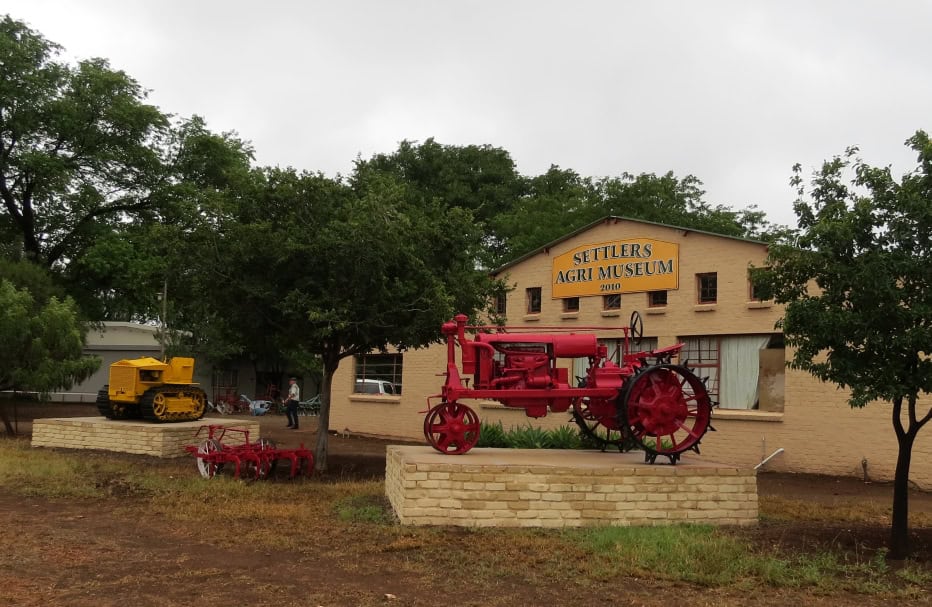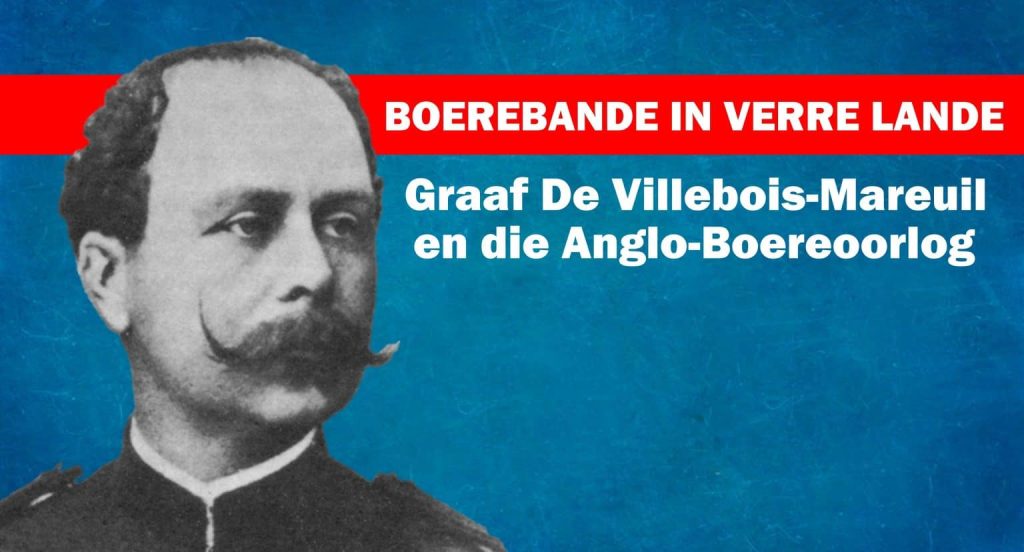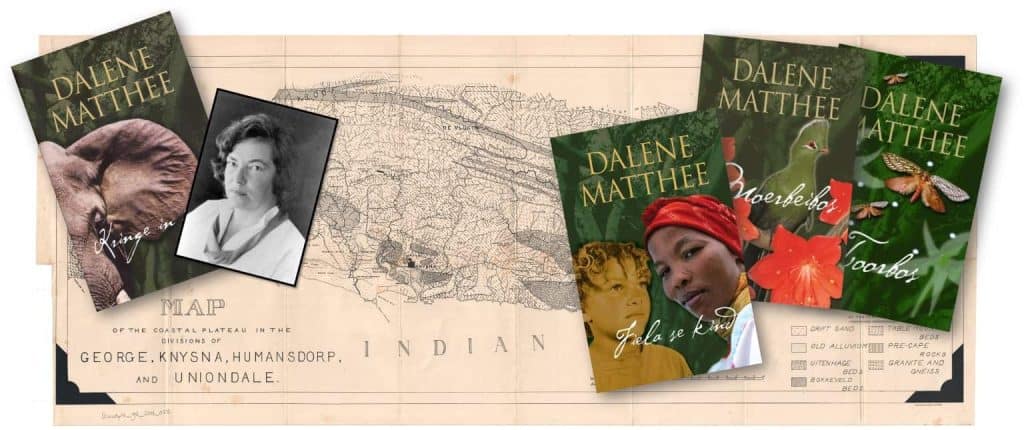In the series Heritage highlights, AfriForum sheds light on heritage landmarks and projects in the country where communities step in themselves to preserve our unique cultural and historical heritage.
When we started the series, we primarily had museums and monuments with which we have had a relationship for some time in mind. It was such a wonderful surprise to learn of several new initiatives by individuals and communities to preserve their history. One of these newer stars on the museum scene is the Settlers Agri Museum. Jan van Blerk, Hannes van Heerden and Ansie Pretorius helped to answer our questions about it.
Alana: Ansie and team, thank you very much for your participation in AfriForum’s series. Please tell us more about the history of the museum?
Ansie: In 2002, the Sandstone Heritage Trust organised a world record attempt near Ficksburg with an effort to simultaneously plough the fields of Sandstone Estates with 400 veteran tractors. Eventually 886 tractors registered for the effort, including 14 veteran tractors from Settlers. This effort had two consequences: South Africa (briefly) held the record in the Guinness book of records, and the Settlers Veterans Club was born. A number of farmers started working together one day a week to restore old tractors. In addition, water pumps and engines have also been restored to working order. The need for a place to preserve and exhibit the restored tractors and engines resulted in the establishment of the Settlers Agri Museum in 2010.

The museum is located on the grounds of the Springbokvlakte Farmers Association at Settlers. A small church has also been relocated here, after it had fallen into disuse on one of the farms. This little church now houses an exhibition of household goods, including a collection of 69 old sewing machines. An equipped workshop was built on the site of the museum and from 2023 the veterans work in this workshop every Wednesday.
Alana: Where is it?
Ansie: The small town of Settlers is located on the Springbokvlakte, a thriving agricultural area near the towns of Modimolle (Nylstroom) and Bela Bela (Warmbad) in Limpopo, about 120 km from Pretoria on the N1 North.
Settlers has an interesting origin. After the Anglo-Boer War (1899-1902), Lord Alfred Milner with his anglicisation policy divided up existing farms in the Transvaal and the Free State and made them available preferably to persons who had served in His Majesty’s Forces. English soldiers could therefore own crown land in the countryside and would theoretically prevent the build-up of Boer nationalism. Approximately 2 000 hectares of land in the vicinity were divided into 38 farms and the town of Settlers was born.
Alana: To whom does the museum belong?
Ansie: The museum belongs to the Springbokvlakte Farmers Association that was established in 1905.
Alana: What can one see at the museum?
Ansie: The museum can be visited by appointment, preferably on a Wednesday when the veterans are working in the workshop. There 34 tractors, 15 engines and approximately 160 model tractors. In the little church, the collection of sewing machines can be seen, as well as other household articles.
Alana: What usually surprises people when they visit Settlers for the first time?
Ansie: Along the streets of Settlers, a lane of weeping boer-bean trees was planted for which the funds had been made available by the first residents of the area. There is also a modern John Deere dealer, a clinic, two large English schools with residences on a tree-rich school site, grain silos of VKB/NTK, a kindergarten and other small shops. Settlers is a thriving agricultural area. The farmers’ association can be approached to organise farm visits.
Alana: Does the museum host any special events?
Ansie: The veterans organise an open day once every 2 years during which all the engines and tractors are respectively switched on and driven. The last open day was in March 2024 – it was a great success.
Alana: What are some of the challenges you face and what is on the museum’s wish list?
Ansie: It is a challenge to secure sufficient funds to repair the old tractors and engines. On our wish list is that we would like to get young members involved in the veteran club. And that the museum can be expanded to exhibit the engines separately, so that there will be even more space for tractors.
Alana: How can people who are interested your activities get involved?
Ansie: We believe that visits to the museum will create interest. Anyone, even someone who does not necessarily have the skills, is most welcome to join us on Wednesdays and get involved.
Alana: What advice do you have for other communities who also want to get involved with a site, monument or museum in their vicinity?
Ansie: Start small, but orderly. Gather experts on the subject, but even more importantly, also a group of friends to get actively involved.
Alana: Thank you very much Ansie – we are looking forward to visiting you. Good luck with your activities and thank you for the fantastic work you are doing. May the museum go from strength to strength!
Contact details
To arrange a visit, call Jan van Blerk 082 770 5557, Hannes van Heerden 082 651 2885, or Gerrit Fourie 082 387 5008.
Read also: Heritage highlights 10 – The National Women’s Memorial




















